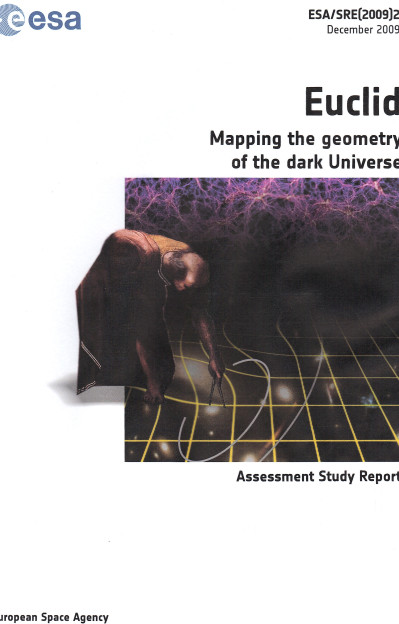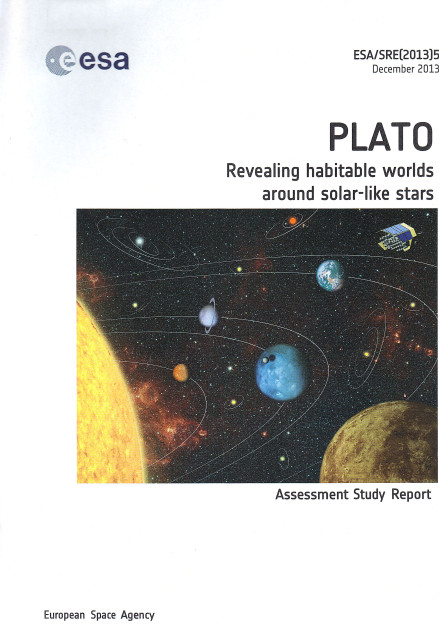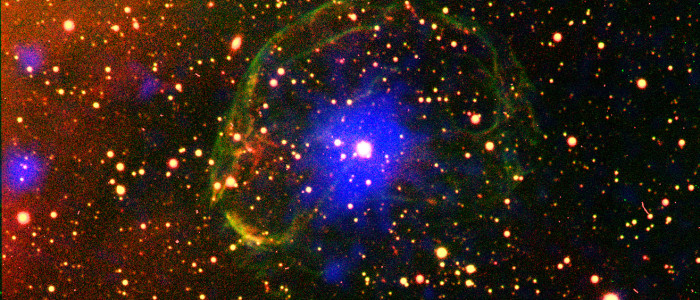Featured Picture: Pulsar encased in supernova bubble. Credit ESA
ESA’s Cosmic Vision and the economic framework make up the main factors for Europe’s engagement within space science and lay the conditions for ESA’s selection for the next years of space science projects. The programme provides the main direction for the research, but how fast the process is going to be depends on the long-term budgets.
One reckons that the space science budget for the next years is going to be almost flat at about 400 million Euros in the year of 2005 value, resulting in plans for several small missions (S), three medium class missions (M) and one large mission (L) for launch in the timeframe of 2017–2022.
Choosing the right projects depends on several factors, making the selection a very circumstantial process that involves both scientific institutes and space related industry.
Involving the Scientists
The ESA scientific programme is based on a continuous flow of projects that fulfil its scientific goals. These projects are identified and selected using the mechanism of the open call.
Whenever appropriate, and compatible with the programme goals and constraints, ESA issues a call for proposals for new science missions. The call includes descriptions of the scientific goals, size, cost of the mission, together with programmatic and implementation details.
Calls are addressed to the scientific community. Missions fall into three categories: small (S-class), medium (M-class) and large (L-class), their size reflecting the scientific goals addressed and eventually the cost and development time required.
Each call for missions usually generates up to 100 responses from academic groups and the mission proposals may cater to astronomy, solar system or fundamental physics research needs.
Most missions will require some new technology to be developed. This is natural because science is progressive and must advance on previous techniques, but new requirements can pose tough challenges for engineers and spacecraft designers.
It is the different member states and the council that make the final decision about new programmes, but it is the Director General that suggests plans and missions for the council.
ESA’s organisation under the Director General is divided in ten departments, and one of these is the Department of Science and Robotic Exploration (D/SRE). However, to manage the comprehensive field of science, ideas and interests, the Director has several working groups and science committees supporting him in choosing the right projects.
Firstly, the different working groups for the main fields:
Astronomy Working Group (AWG)
Solar System Exploration Working Group (SSEWG)
Fundamental Physic Working Group (FPWG)
For assessment and recommendation
Space Science Advisory Committee (SSAC)
For assessment and decision:
Science Program Committee (SPC)
Towards a Real Mission
Let us follow a project selected as the second M-class mission, Euclid.

The Euclid Yellow book. Credi ESA.
The Cosmic Vision, ESA’s long- term plan for 2015 to 2025, the basis for the projects that currently run in Europe, is rooted in the 2004 plans. This year the scientific community in Europe is able to suggest new ideas for research activities for the period after the end of Horizon 2000+, the so-called “Call for Themes”. One hundred and fifty proposals from the whole of Europe were received, and based on these, the main strategy for the next period was drawn up.
One of the suggestions came from the University of Oslo (UiO), Norway. POLARIS – Polarization-based Inflation Survey within the field of Cosmology. This proposal was one of the 150 that lay the basis for the Cosmic Vision.
The long- term programme was decided in 2006 and in March 2007 ESA announced “Call for Proposals” related to the Cosmic Vision. By the time of the submission deadline, more than 50 proposals had been received. The proposed missions covered a wide variety of scientific objectives, objectives that fell well into the founding pillars of ESA’s Cosmic Vision’s four major themes.
Out of these 50 concepts three medium-class missions (candidates to M1 and M2), and three large-class missions (L1) were selected for assessment studies. Among these proposals, the University of Oslo participated with a new project within the field of cosmology, much within the same framework as the POLARIS idea.
All proposals for the first medium class missions were collected in November 2007 and ESA’s Internal Assessment Phase runs to May 2008. In this process, all the proposals go through an evolution with regard to realism, scientific benefits, technical possibilities and cost etc. In addition, proposals with almost the same intention were combined. After the evaluation three interesting candidates were selected; Euclid, Solar Orbiter and PLATO. The proposal from the University of Oslo was now included in the Euclid project.
For each of these three, a complete report, the “Yellow Book”, was worked out, a report that follows the missions for further evaluation.
These three projects go to the next phase; the Industrial Assessment Phase where the technical possibilities for the projects are evaluated by two chosen industrial consortia, for Euclid’s case, EADS Astrium and Thales Alenia Space. They evaluate the projects with the emphasis on payload, cost and risk. This Technical Review Report was complete in August 2009, and still three candidates remain.
The next step was an open presentation of the evaluation, and the Working Group’s recommendations, for the scientific community.
Space Science Advisory Committee (SSAC) recommendation for three candidates to the competitive Definition Phase was published in January 2010 and the Science Program Committee’s (SPC) decision was made in February 2010 and all the three missions went through a competitive phase, running until September 2011.
Space Science Advisory Committee and the different working groups delivered their recommendation and adoption of two missions to the Science Program Committee (SPC) in October 2011 and the SPC made the decision about two missions for Invitation to Tender (ITT) released in November 2011.
The selection phase ended with the decision to select Solar Orbiter as the M1 mission, while Euclid was selected as the M2 mission.
After that, different negotiations were carried out and a formal agreement for the payload was signed in July 2012.
The chosen mission entered the implementation phase in September 2012 and a five- year job with the mission will be ended in 2017 or 2018, with launch of the two missions, and the first scientific results are expected shortly thereafter, if the missions turn out successfully.
For Euclid, it took nearly twenty years from the first ideas until results of the proposal were obtained.
What About the Scraped Projects?

The PLATO Yellow Book.
When it comes to most of the mission competitions, the scientific communities can choose between three very detailed projects, all of which have been worked out very thoroughly and carefully. Will two good project be scraped, then?
Not always, some can be proposed for a new mission and enter the competition again.
PLATO, or PLAnetary Transits and Oscillation of stars, is such a mission.
The PLATO mission was proposed in 2007 as a medium class candidate in response to the first call for mission of the Cosmic Vision 2015-2025 programme. Following favourable reviews by ESA’s scientific advisory structures, PLATO was selected as one of the missions for which an ESA assessment study was carried out in 2008 and 2009. The proposal went through a definition study in 2010, but unfortunately, the mission was not selected for the M1 and M2 launch opportunities, Solar Orbiter and Euclid were chosen.
However, the research themes were of current interest, the project well carried out, and the proposal was nominated as one of the candidates for the M3 mission for the launch opportunity in 2022-2024. PLATO is therefore one of the three candidates for the M3 mission. The selection phase is running, and possibly, a proposed mission from 2007 can be launched in the 2022–2024 timeframe.
Extended Life for a Mission
All scientific missions are given a lifetime related to their technological capabilities, scientific interest, fuel consumption, trajectory time etc. However, many of the missions are running very well with the planned “end of life”, and still deliver valuable scientific data. Will they be switched off?

ars Express – one of the long lived ESA Projects. Credit ESA.
Not consistently. Many of the missions have been given an extended timeframe because the scientific data stream is very valuable. Missions such as SOHO, launched in 1995 and with an expected lifetime of five years, is still in service and has an extended lifetime until 2016. The same goes for missions such as Cassini-Huygens, XMM Newton, Cluster, Integral and Mars Express.
Such an extension is not free. The missions still need resources for management, downloading data, data storing etc. resources that must be taken from ESA’s scientific budgets, or be taken from external budgets. In nearly all cases, such an extension will be at the prize of new projects. ESA and the scientific communities must balance the scientific benefit against the cost. At one point the satellites must be switched off and the data stream stop. However, that does not necessarily mean the end of the project. The stored data can and will be used for years to come.


